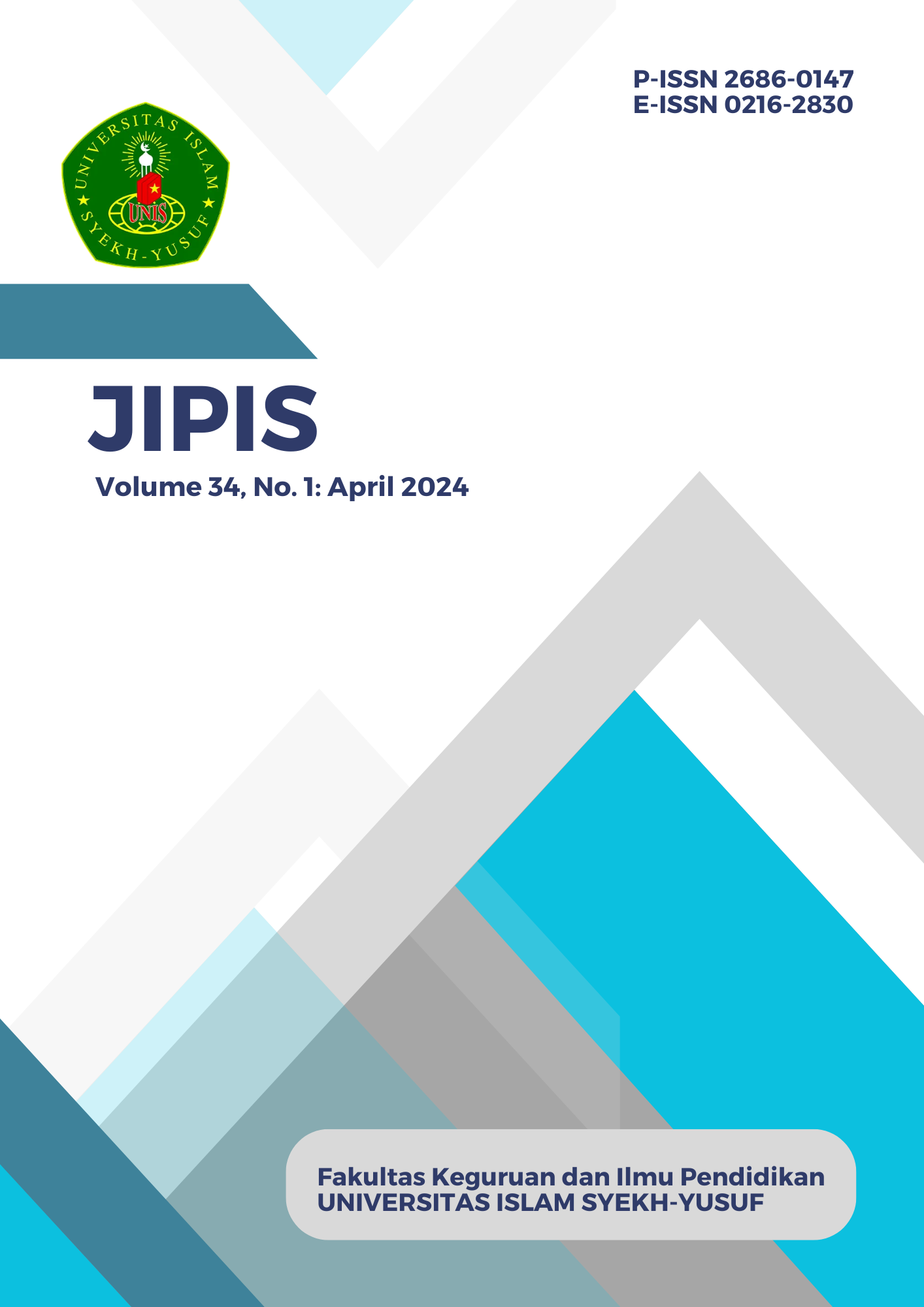THE CORRELATION BETWEEN EXPOSURE TO SHORT-FORM CONTENT ON TIKTOK AND INSTAGRAM REELS AND EFL LISTENING SKILLS AMONG HIGH SCHOOL STUDENTS
DOI:
https://doi.org/10.33592/jipis.v34i1.6251Keywords:
digital platforms, EFL, Instagram Reels, listening skills, short-form content, TikTokAbstract
Abstract
This study examines the impact of short-form content on TikTok and Instagram Reels on the English as a Foreign Language (EFL) listening skills of high school students. Employing a quantitative correlational research design, the study involved 30 participants who completed pre-tests and post-tests to measure their listening comprehension. Data collection included a questionnaire capturing usage patterns of TikTok and Instagram Reels and a listening comprehension test using TED-Ed videos. The analysis revealed that short-form content positively correlates with improved listening skills, suggesting that these platforms offer engaging and interactive learning opportunities. However, the study also highlighted potential challenges, such as content quality and distraction risks. These findings provide valuable insights for educators and policymakers to leverage digital platforms effectively in EFL instruction, balancing their potential benefits with strategies to address associated challenges.
Keywords: digital platforms; EFL; Instagram Reels; listening skills; short-form content; TikTok
References
Abdulaziz Al Fadda, H. (2020). Determining How Social Media Affects Learning English: An Investigation of Mobile Applications Instagram and Snap Chat in TESOL Classroom. Arab World English Journal, 11(1), 3–11. https://doi.org/10.24093/awej/vol11no1.1
Al-Jarf, R. (2021). TED Talks as a Listening Resource in the EFL College Classroom. International Journal of Language and Literary Studies, 2(3), 256–267. https://doi.org/10.36892/ijlls.v2i3.691
Alm, A. (2021). Language learning with Netflix: From extensive to intra-formal learning. The EuroCALL Review, 29(1), 81. https://doi.org/10.4995/eurocall.2021.14276
Anggraini, T., Widarti, H. R., & Rokhim, D. A. (n.d.). DEVELOPMENT OF INSTAGRAM AND TIKTOK-BASED LEARNING MEDIA ON QUALITATIVE ANALYSIS MATERIAL OF GROUP I AND II CATIONS WITH A MULTI-REPRESENTATION APPROACH. JOURNAL OF EDUCATORS ONLINE.
Ary, D., Jacobs, L. C., Razavieh, A., & Ary, D. (2010). Introduction to research in education (8th ed). Wadsworth.
Creswell, J. W., & Creswell, J. D. (2014). Research Design: Qualitative, Quantitative, and Mixed Methods Approaches.
Erarslan, A. (2019). Instagram as an education platform for efl learners. The Turkish Online Journal of Educational Technology, 18(3).
Ghimire, S. P. (2022). Secondary Students’ Learning English through Social Media: A Case Study in Nepal. International Journal of Research in Education and Science, 8(3), 529–544. https://doi.org/10.46328/ijres.2758
Gonulal, T. (2019). The Use of Instagram as a Mobile-Assisted Language Learning Tool. Contemporary Educational Technology, 10(3), 309–323. https://doi.org/10.30935/cet.590108
Goss-Sampson, M. A. (2022). Statistical analysis in JASP: A student's guide (5th ed., Version 0.16.1). University of Greenwich. https://jasp-stats.org/
Gulatee, Y., Combes, B., & Yoosabai, Y. (2021). Social Media among Thai students: Narcissism, self-identity or empowerment? Higher Education Studies, 11(1), 79. https://doi.org/10.5539/hes.v11n1p79
Kaiser, F. J. (2023). #TeacherQuitTok: A content analysis of how current and former teachers navigate attrition on TikTok. 17.
Karim, S. A., Ramli, R., Rusmanto, G., Fadhila, R. M., Alamsyah, D. F., & Putra, M. A. (2023). EXPLORING EFL STUDENTS’ VIEWS ON USING YOUTUBE VIDEOS FOR IMPROVING LISTENING SKILLS IN ENGLISH. English Review: Journal of English Education, 11(3), 757–766. https://doi.org/10.25134/erjee.v11i3.7763
Maierová, E. (2024). INSTAGRAM IN TEACHING ENGLISH FOR SPECIFIC ACADEMIC PURPOSES. Advanced Education, 12(24), 75–91. https://doi.org/10.20535/2410-8286.285461
Mannahali, M., Angreany, F., & Rosmaladewi, R. (2024). Improving German Speaking through YouTube Media in Higher Education. International Journal of Language Education, 8(2). https://doi.org/10.26858/ijole.v8i2.65001
Maretha, A. L., & Anggoro, K. J. (2022). App Review TikTok: Benefits, Drawbacks, and Implications for the ELT Field. 46(2).
Mujayanah, S., Maruf, N., & Asari, S. (2023). Exploring Tiktok’s Impact on Enhancing Speaking Skills in Language Learning: A Classroom Action Research. JET ADI BUANA, 8(02), 123–136. https://doi.org/10.36456/jet.v8.n02.2023.8356
Pereira, B. B., & Ha, S. (2024). ENVIRONMENTAL ISSUES ON TIKTOK: TOPICS AND CLAIMS OF MISLEADING INFORMATION. Journal of Baltic Science Education, 23(1), 131–150. https://doi.org/10.33225/jbse/24.23.131
Ulla, M. B., Lemana Ii, H. E., & Kohnke, L. (2024). Unveiling the TikTok Teacher: The Construction of Teacher Identity in the Digital Spotlight. Journal of Interactive Media in Education, 2024(1), 12. https://doi.org/10.5334/jime.845
Zhang, Y., Lucas, M., Bem-Haja, P., & Pedro, L. (2023). Analysis of short videos on TikTok for learning Portuguese as a foreign language. Comunicar, 31(77). https://doi.org/10.3916/C77-2023-01




 View JIPIS Stats
View JIPIS Stats